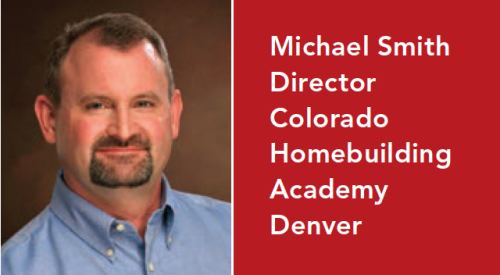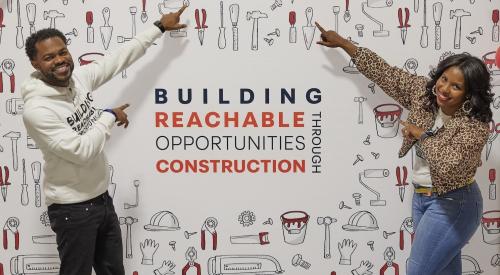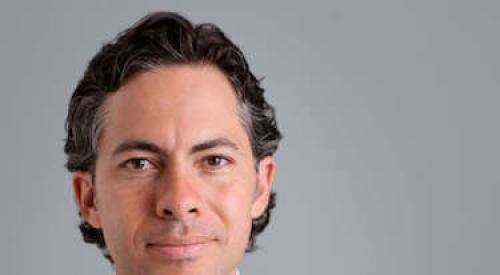
Alan Laing, a Pulte veteran who landed at Orleans Homebuilders during that company’s post-bankruptcy period in 2012, called that stint his “leadership lesson of a lifetime.” He instilled forgotten fundamentals and recruited a fresh senior leadership team that turned the builder around before attracting Lennar and Taylor Morrison to buy the Bensalem, Pa.-based company’s operations. Taylor Morrison hired the former president and CEO last January.
Q: What is the pressing challenge with optimizing efficiencies at a national level for a builder?
A: I worked at Pulte for a long time. I was head of operations there, building 35,000 homes a year, so I’ve had a little practice at this. For us in the current environment, labor is certainly challenging. But it’s different city by city and by state. It’s framers in Phoenix, plumbers and drywallers in Tampa. It’s unique to every market.
There are supply-chain constraints, too. I think a lot of suppliers have been slow to invest in supply and capacity, so we’ll see truss order lead times that have gone from two weeks to four to six weeks. That’s not unusual at this stage in these cycles. And municipalities are understaffed. They’re loath to have overhead, so it takes time to get permits, and inspection lead times are longer. We are in no way unique in that, so we’re working to shorten the sale-to-start process and are making sure that once we sell a home, options and selections are done as quickly as we can, and we’re in for permits. We’re working hard on accurate construction drawings so we can pass the first time and are trying to move more of the master plan—versus lot-specific—permit approval, so all of the tactical things can help us be more efficient
Q: So you’re dealing with the things you can control internally because there’s only so much that you can do about the labor shortage?
A: We can influence that. Labor typically is paid on piecework, so the more efficient our product designs are the easier our houses are to assemble. That matters, so we’re working at getting really efficient, repeatable structural design. We’re working hard on common truss lines; on the fundamentals and on good framing practices, so we’re the builder of choice for this scarce resource. Subcontractors can make more money working for us than they can for anybody else, and our jobsites are safe, clean, and ready when the subs arrive. So if subcontractors have a choice of whether they work for us or for a competitor, they will want to work for us.
Q: Your hiring announcement specifically mentioned that you would be focusing on optimizing purchasing and on green building to drive financial performance. Could you tell us more about that?
A: We are very focused on the three core functions in the field: land sales, production, and purchasing. They’re all getting equal attention. I think the opportunities are more in salesforce effectiveness, purchasing cost containment, cost management, value engineering, and then cycle times—sales to start and start to close. I think every city is working differently with a unique selling position. The green/energy work is more relevant in some markets than in others. You’ll see [it] work more in California than in Charlotte, N.C. Nationally, we don’t have an energy or holistic green strategy, but individual markets are doing it for a variety of reasons, generally for competitive advantage, and are creating a unique selling advantage in that particular market or in that community. Our company is rapidly growing, and we’re in the markets we generally want to be in today, so we want to have better execution now that we’re at scale. That’s where a lot of the energy is going.
Q: What’s being done to enhance the customer and employee experience?
A: Long before I arrived, the team here established a great culture with the field leadership teams and all of our employees. Customer satisfaction and customer delight are core values and have been for a long time. I was delighted to walk into that environment, and it’s a credit to everyone here. So delivering a high quality home on time and delivering a great service experience from the time they go on our website to when they are living here long after they close. We believe that the brand recognition comes from referrals and repeat buyers and just frankly the business result. The last thing we want to do is build new houses and fix them for the next five years. So there’s a business dimension to build a home complete the first time and having a consumer and homeowner enjoy it. On the employee front, the only sustainable advantage in this business is people and this organization believed that long before I came here. So we’re working very hard on how do we recruit, retain, and develop top talent in the industry. We like to think that marrying disciplined execution and consistency will put a platform in place for really adaptive, disruptive behavior in the future, whether that is the difference in behavior with customers or with having a wheelbase in our employees’ capacity to attack markets and create competitive advantage. That is the only way you win this game over time.
Q: Back to your point of the supply chain being slow to boost their capacity, if homebuilding is in the middle of a business cycle is there a concern that suppliers won’t expand their capacity from this point because they fear arriving late to the upturn?
A: Think about it through two lenses. These markets are pretty efficient so where there is demand, capital will find its way to it. Every supply chain is highly variable so if it’s engineered wood products, there are $50 billion companies that produce that product, and it’s not incremental capital, it’s adding back a line or paying overtime, and they’re starting to respond to those things. Similarly, the truss manufacturers typically are public companies. So even if they have the capital, it’s (a tight market) to hire the people and get the lines and equipment in place. It’s just a function of growth rates beyond what are reasonable. It’s clunky. They’re just catching up, but it’s taking time. The cabinet guys, that industry consolidated during the downturn and closed a lot of facilities and have been loath to bring them back on. In some cases they sold them. It’s not hurting us all the time in the production piece but in the parts piece if we need something, if a drawer face gets scratched or broken, we’re waiting three or four weeks to get it and if that home is closing, it’s uncomfortable for us.
The supply chain situation is different market to market, but labor is the more consistent constraint where you have a lot of trades that are aging out. They’re 55 and don’t want to be a plumber anymore. Not many kids out of high school or college want to be a plumber, so we’ve got a fundamental disconnect in the perception of the quality of that life and that job in our society. A lot of heavier labor is typically Hispanic, and it’s a lot harder to get into the country and stay in the country so that’s going to be a structural problem for a while. Developing interest in the trades is something that Sheryl (Palmer, CEO of Taylor Morrison) have been talking about with the other COOs and CEOs in the industry. Somehow we’ve got to figure out a way to make the industry attractive at that level and provide training and support. We’re hurting in that trade base over time and another dimension is how do we make it easier with subcomponents and subassembly and all sorts of things that other industries have figured out a long time ago. We’ve got to recruit people to the trades, and we’ve got to make it easier to be successful in that job. A lot of that is how we design our product and how we sequence our job sites and our production and keep a good cadence to work and people coming to work everyday. There’s a lot of opportunity.
Q: Is there a stage in your career, whether it was Pulte, Orleans, or consulting that you’re leaning on more as you take on your tasks at your current job?
A: As you get to my age, it’s sorting out the significant few from the trivial many. Most of my time is dedicated to people; how do we get the right talent in the organization and how do we embrace them and get the effort you need to have outstanding performance? Day-to-day role modeling, coaching, feedback, developing infrastructure, and systems for recruiting the top talent, that is where I devote most of my time. What I have learned is at these stages and cycles there is so much intellectual capital that has left the industry in the late 2000s that you can’t take for granted that the people who work in the homebuilders today grew up in the industry or have the experience. So there’s a real awareness of the need for education and training on many levels. That’s my walking around radar. I can sense what is working and what is not. It’s easy to play blame game but there is no future in that. It’s how do we get people to embrace people to get out there and do a great job and provide the training and environment where they can learn and succeed. From my stint at Orleans and being around hedge funds and boards of directors, you just get a well rounded executive experience that gives you the sense of what to work on and what to leave alone.
Q: What do you like most about your current job?
A: What get’s me out of bed in the morning is working with smart people who are committed to our mission here and together we can enrich each others lives and help others self actualize around us. That is why I do this any more, it’s how you watch talented, really smart people grow and learn, and they help me grow and learn. The two people in the room with me are Millennials, which I love and they think differently about the world and us old guys need that education periodically. It’s just being a life long learner. How do you continue that journey and be productive and surround yourself with the best talent you can find. One of Bill Pulte’s old statements is hire people that are smarter than you, which for me is not hard. That’s what is rewarding for me. We have a strategy, we measure it, and I’m as competitive as the day is long. It’s a lot of fun to win.













